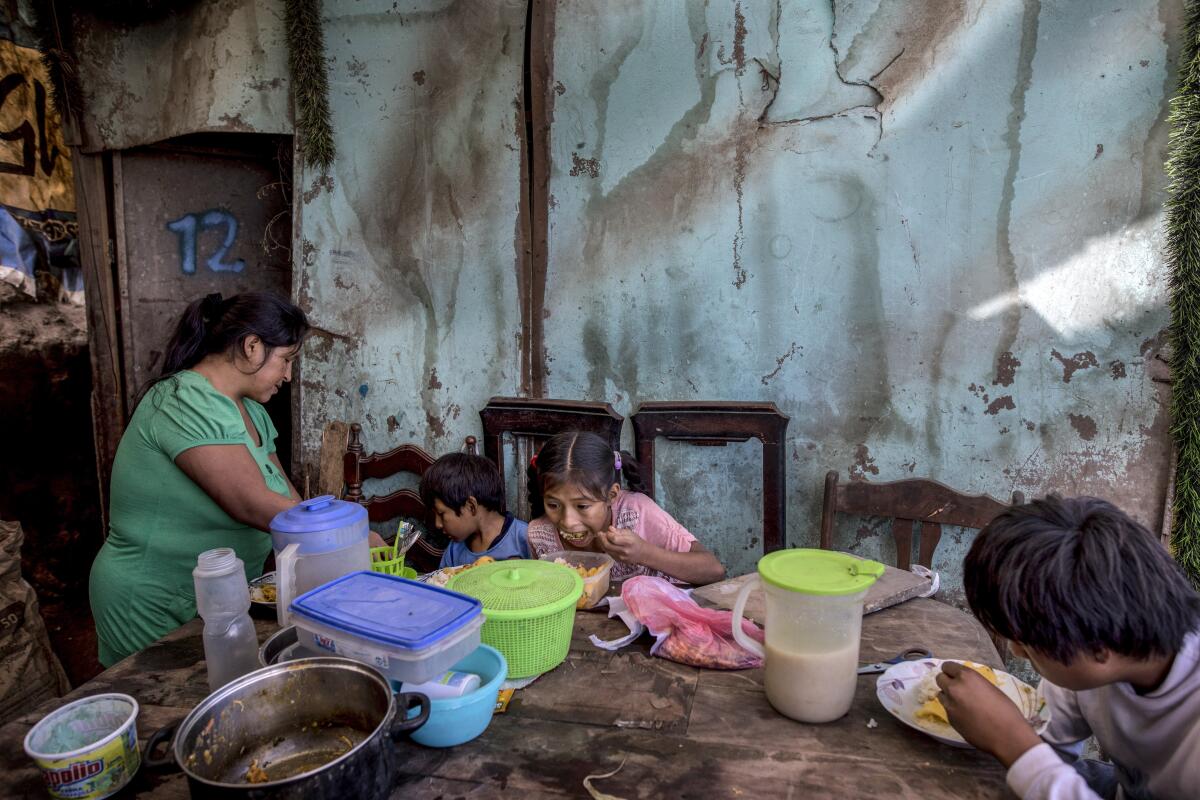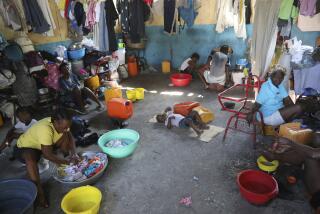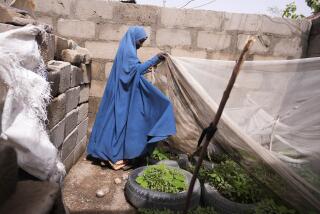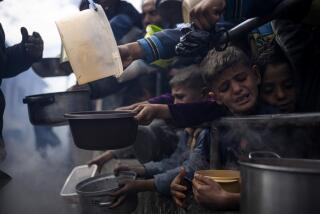U.N. seeks food funds as virus pushes millions into hunger

- Share via
JOHANNESBURG, South Africa — Millions of people have been pushed into hunger by the coronavirus pandemic, the U.N. World Food Program said Monday as it appealed for nearly $5 billion to help feed those in need in poor and middle-income countries.
“The front line in the battle against the coronavirus is shifting from the rich world to the poor world,” said David Beasley, WFP’s executive director. “Until the day we have a medical vaccine, food is the best vaccine against chaos.”
He said that, unless there is access to enough food, the world could see “increased social unrest and protests, a rise in migration, deepening conflict and widespread under-nutrition among populations that were previously immune from hunger.”
To tackle the rising tide of hunger, WFP is undertaking the biggest humanitarian response in its history, aiming to assist 138 million people, up from from a previous record of 97 million in 2019. The agency says sustained funding is needed to support its work in 83 countries, to provide food to the most vulnerable and to support governments working to curb the spread of COVID-19.
The WFP says the number of hungry people in the countries where it operates could increase to 270 million before the end of 2020 — an 82% increase from before the pandemic took hold.
The fallout from the pandemic is being felt hardest in Latin America, which has seen an almost threefold rise in the number of people requiring food assistance, and among urban communities in low- and middle-income countries, which are being dragged into destitution by job losses and a precipitous drop in remittances, the money sent by migrants to family and others in their home countries.
Spikes in hunger are also evident in West and Central Africa, which has seen a 135% jump in the number of “food insecure,” as well as in Southern Africa, where there has been a 90% rise.
Coronavirus infection levels are climbing at a time when food stocks in some parts of the world are already low. At this time of year, many farmers are awaiting crops from new harvests. Hurricane and monsoon seasons are getting underway, while record locust invasions in East Africa and outbreaks of conflict are adding to an already challenging outlook for the world’s hungry.
“This unprecedented crisis requires an unprecedented response,” Beasley said. “If we do not respond rapidly and effectively to this viral threat, the outcome will be measured in an unconscionable loss of life, and efforts to roll back the tide of hunger will be undone.”
The new challenge requires a big increase in the use of cash-based transfers. More than half of WFP’s new response plan will be delivered in cash and vouchers — allowing urban communities to purchase their food needs in local markets, which boosts local economies.
More to Read
Sign up for Essential California
The most important California stories and recommendations in your inbox every morning.
You may occasionally receive promotional content from the Los Angeles Times.










